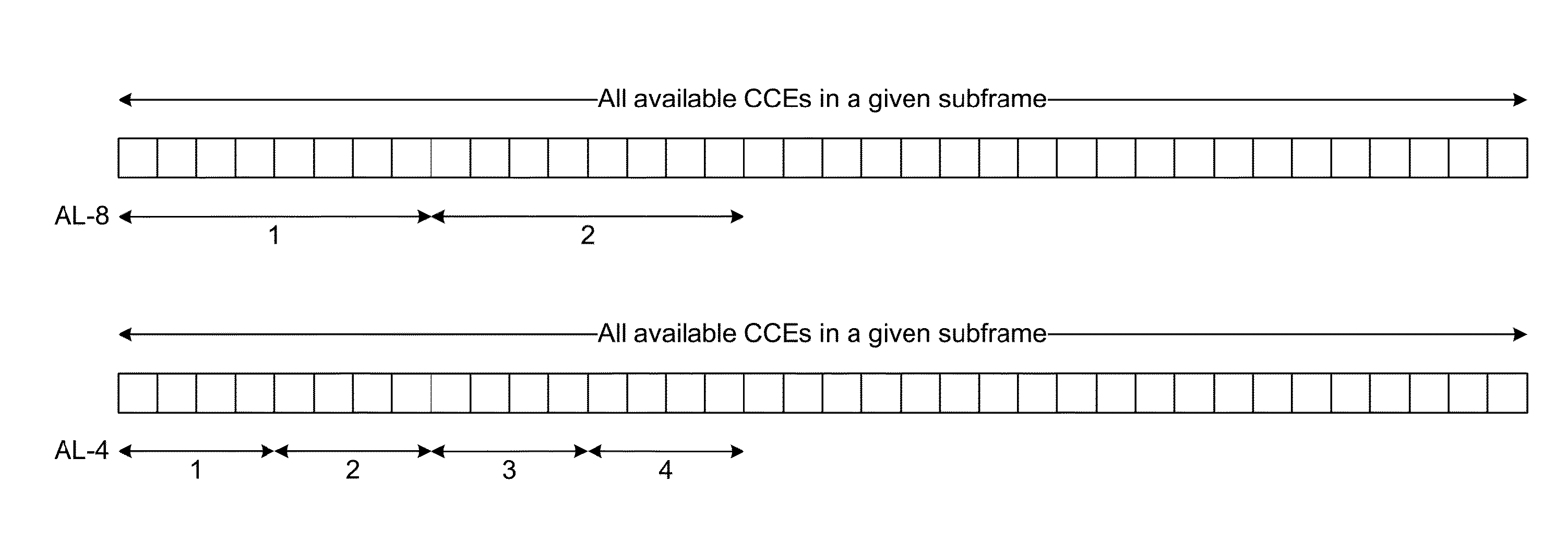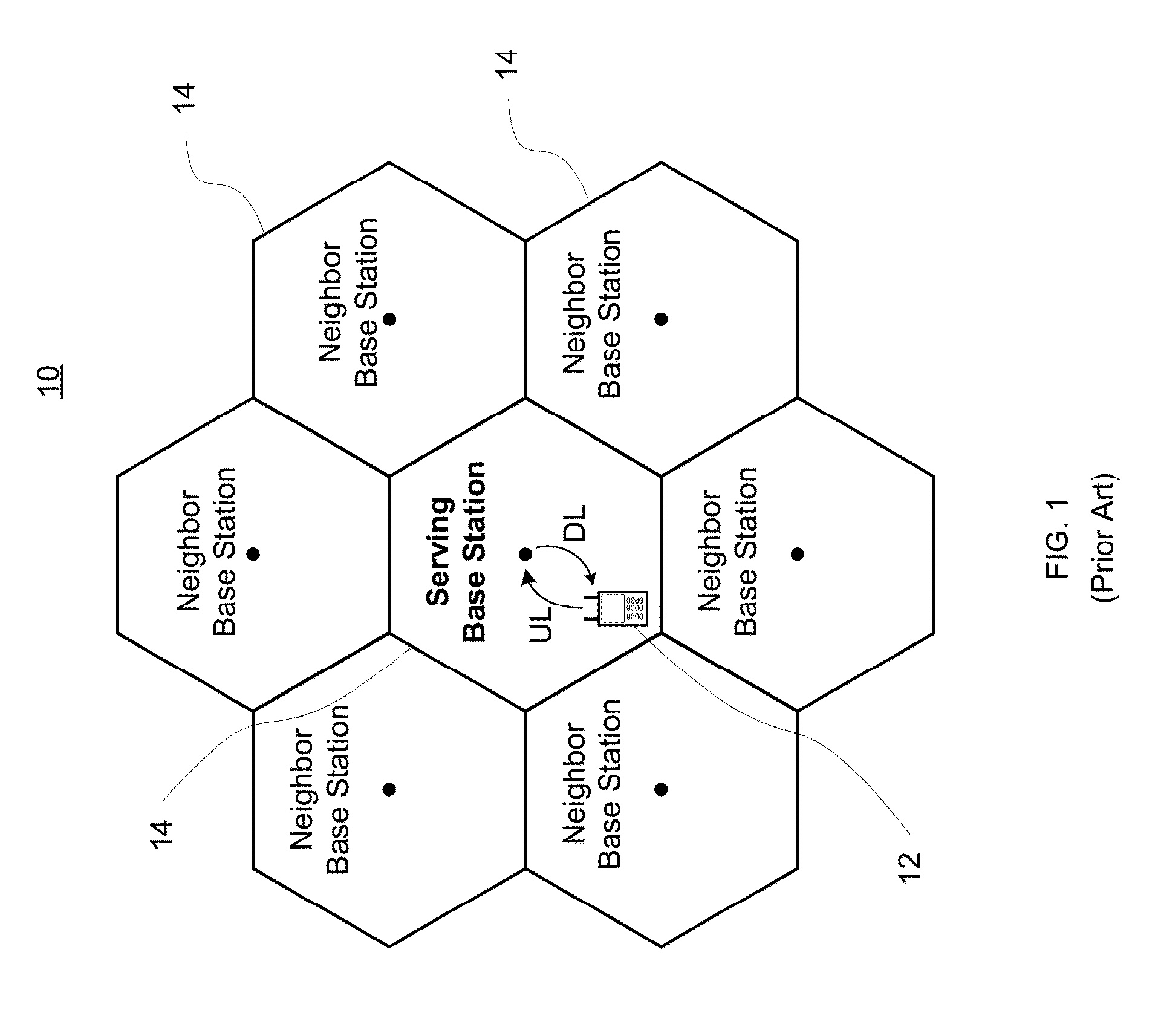Method and apparatus for detecting inconsistent control information in wireless communication systems
a wireless communication system and control information technology, applied in wireless communication, wireless communication, transmission path sub-channel allocation, etc., can solve the problems of system overhead, large number and size of control messages required to establish a phone call, and high traffic pattern of internet usag
- Summary
- Abstract
- Description
- Claims
- Application Information
AI Technical Summary
Benefits of technology
Problems solved by technology
Method used
Image
Examples
Embodiment Construction
[0054]Methods and apparatus are described that reduce the probability of false PDCCH detection and duplicate PDCCH detection.
[0055]According to an aspect of the present invention, some false PDCCH detections may be identified by checking the content of the decoded message. The PDCCH carries payloads of different DCI messages. Each of the DCI messages is transmitted according to a specific format comprising a number of bit fields. The output of the PDCCH decoder is parsed for the expected format. In one scenario, the following list of checks is performed for identifying the false PDCCH detection:
[0056]Checks to be Performed to Avoid False PDCCH Before DCI Data Parsing[0057]1. Only one SI-RNTI based PDCCH or P-RNTI based PDCCH may be detected in a subframe.[0058]2. Only one RA-RNTI or C-RNTI or SPS-C RNTI or Temp-C RNTI based PDSCH is allowed in a subframe.[0059]3. Only one PUSCH grant (DCI Format 0) based on C-RNTI, SPS-C RNTI or Temp-C RNTI is allowed in a subframe. For TDD Configur...
PUM
 Login to View More
Login to View More Abstract
Description
Claims
Application Information
 Login to View More
Login to View More - R&D
- Intellectual Property
- Life Sciences
- Materials
- Tech Scout
- Unparalleled Data Quality
- Higher Quality Content
- 60% Fewer Hallucinations
Browse by: Latest US Patents, China's latest patents, Technical Efficacy Thesaurus, Application Domain, Technology Topic, Popular Technical Reports.
© 2025 PatSnap. All rights reserved.Legal|Privacy policy|Modern Slavery Act Transparency Statement|Sitemap|About US| Contact US: help@patsnap.com



